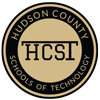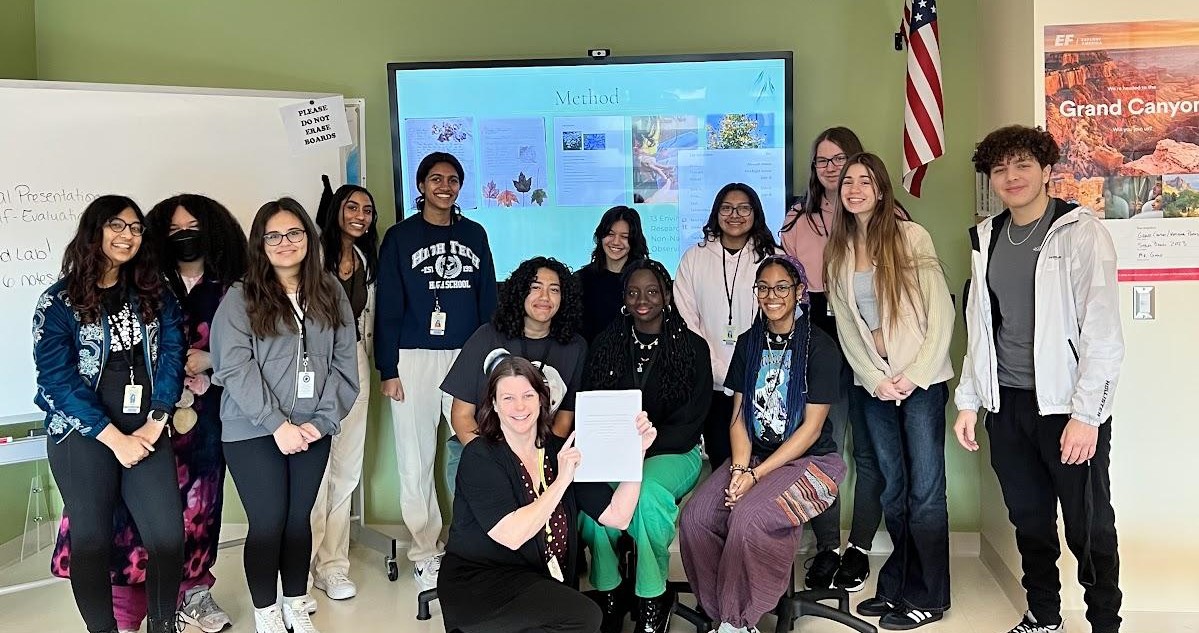Placed within the Hackensack Meadowlands of Northern New Jersey is our beautiful High Tech High School campus, surrounded by a rich assortment of flowers, trees, and shrubs. The ecosystem around the school consists of tidal marshes, salt marshes, and other wetland habitats which are scattered among a mass of industrial landscapes. There is also a colony of Italian Honey Bees residing on the property. Dr Witham, teacher from the Academy of Environmental Science and Sustainability, has introduced a collaborative research project & paper to encourage students to analyze eco-friendly solutions to maintain our lush, green campus and protect the bee colony. The premise of the project is to educate the reader on the sustainability of the current landscape, as well as guide them on how alterations can be made to campus flora to improve the health of High Tech’s bee colony.
A group of thirteen High Tech High School students in Dr. Witham’s Environmental Field and Research II class, recorded and contributed data of the native and non-native plants that grow around the High Tech campus. The data was collected in separate journal entries consisting of all the plants in the designated zones surrounding the school. Journal entries included name, date, plant location by zones, plant description, and plant samples along with photos of each plant recorded. The paper focuses on High Tech’s greenery and foliage, determining whether certain plants are native or non-native, how they influence the surrounding ecosystems, and the importance of different plants to bees. Additionally, it documents plant varieties across campus which were further researched and turned into an in-depth plant glossary.
Results show that out of the thirty-three researched plants, fifteen are native to Eastern North America and eighteen are non-native. In regards to the bee’s health and well-being, seventy-three percent of the plants on campus are beneficial to bees. This paper details that no non-native plants will be removed unless they become costly, invasive to the surrounding ecosystem, or do not provide benefits to the bee colony.
This experience provided students with a unique and meaningful opportunity to learn about sustainability outdoors. Dr Witham also took this opportunity to educate the students on writing a well-researched, academic/college-level paper; they learned to accurately record data and were familiarized with the guidelines necessary to create an APA style appendix. Dr Witham states “It’s meant to be a lab type assignment, and as project manager, I hold weekly discussion-based meetings to assess students’ papers, compare their research and promote outside the box thinking”.
We cannot wait to see what other incredible research the students in the Environmental Science Academy discover!
BY RIANA WADHWANI

